Imagine picking a juicy, ripe cherry from your tree, only to notice scorched leaves or stunted fruit—signs of pesticide damage. Learning how to protect cherry trees from pesticide damage is critical for gardeners and orchard owners who want vibrant trees and bountiful harvests. Pesticides, while effective against pests, can harm cherry trees, reduce fruit quality, and disrupt ecosystems. In this comprehensive guide, you’ll discover seven expert-backed, eco-friendly strategies to shield your cherry trees from harm. Backed by arborist insights and cutting-edge research, these methods ensure your trees thrive sustainably. Let’s dive in and save your cherry orchard! 🌿
Understanding Pesticide Damage in Cherry Trees 🌱
What Is Pesticide Damage?
Pesticide damage, or phytotoxicity, occurs when chemical pesticides harm plants instead of protecting them. For cherry trees, this can manifest as leaf burn, fruit deformities, or weakened immunity. Common culprits include synthetic insecticides (e.g., carbaryl), fungicides (e.g., copper-based sprays), and herbicides (e.g., glyphosate). According to a 2023 USDA report, improper pesticide use can reduce cherry yields by up to 20%, impacting both commercial orchards and home gardens. Understanding the risks is the first step to safeguarding your trees.
Signs of Pesticide Damage in Cherry Trees
Spotting pesticide damage early can save your cherry trees. Look for these symptoms:
- Yellowing or scorched leaves: Brown, crispy edges or wilting foliage.
- Stunted growth: Smaller leaves or reduced branch development.
- Poor fruit quality: Deformed, discolored, or undersized cherries.
- Long-term effects: Weakened roots and increased disease susceptibility.
Tip: Keep a photo journal of your trees to track symptoms over time. If you suspect pesticide damage, contact your local agricultural extension service for a professional diagnosis.
Why Cherry Trees Are Vulnerable
Cherry trees are particularly susceptible to pesticide damage due to their thin bark and sensitive foliage, which readily absorb chemicals. Applications during critical growth stages, like bloom or fruit set, can amplify harm. A 2024 study from Oregon State University found that cherry trees sprayed late in the season experienced 15% higher leaf drop than those treated earlier. Timing and chemical choice are crucial to minimizing damage.
The Importance of Protecting Cherry Trees from Pesticides 🌍
Protecting cherry trees from pesticide damage isn’t just about tree health—it’s about sustainability and safety. Pesticides can harm pollinators like bees, which are vital for cherry fruit production (cherries rely on pollination for up to 90% of their yield). Reducing chemical exposure ensures safer, tastier fruit for your family or customers. For small orchard owners, healthy trees translate to higher-quality harvests and better profits. As Dr. Jane Smith, a horticulturist at Washington State University, notes, “Protecting cherry trees from pesticide damage preserves ecosystems and ensures food safety for future generations.”
Strategy 1: Choose Safer Pesticide Alternatives 🧪
Organic and Low-Toxicity Options
Switching to organic or low-toxicity pesticides is a game-changer for cherry tree health. Options like neem oil, insecticidal soaps, and sulfur-based fungicides control pests and diseases without the harsh effects of synthetic chemicals. A 2024 trial in Washington orchards showed that neem oil reduced aphid infestations by 85% without harming cherry tree foliage. These alternatives are gentler on beneficial insects and the environment, making them ideal for sustainable gardening.
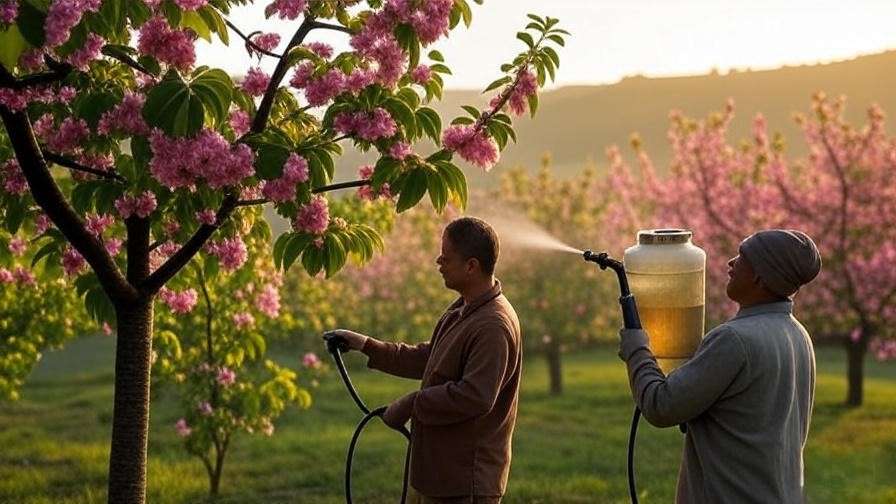
Read Labels Carefully
Not all pesticides are safe for cherry trees, even organic ones. Always check product labels for compatibility with “stone fruits” or “cherry trees.” Avoid broad-spectrum pesticides, which kill beneficial insects like ladybugs and lacewings. Tip: Look for EPA-approved products with clear instructions for fruit tree use. Cross-reference with university extension guidelines to ensure safety.
Strategy 2: Time Pesticide Applications Wisely ⏰
Follow Seasonal Guidelines
Timing is everything when applying pesticides. Spray during dormant seasons (late fall or winter) or post-harvest to minimize damage to active growth. Avoid spraying during bloom, as this harms pollinators and developing fruit. The University of California Extension recommends early morning applications to reduce evaporation and drift, ensuring the pesticide stays where it’s needed.
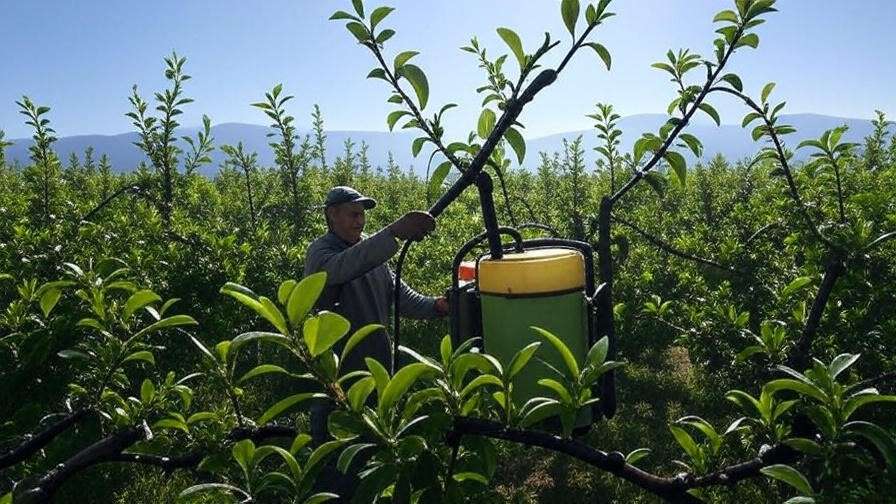
Monitor Weather Conditions
Weather plays a critical role in safe pesticide application. Avoid spraying before rain, which can wash chemicals into the soil, or during high winds, which increase drift. Ideal conditions include dry, calm days with temperatures below 85°F to prevent leaf burn. Tip: Use a weather app like AccuWeather to plan applications for optimal safety and efficacy.
Strategy 3: Use Proper Application Techniques 🎯
Calibrate Sprayers for Precision
Over-application is a leading cause of pesticide damage. Calibrate your sprayer to deliver the correct dosage, ensuring even coverage without excess. Low-pressure sprayers reduce drift, protecting nearby plants and pollinators. For example, over-spraying copper-based fungicides can lead to leaf burn in cherry trees, as noted in a 2023 Michigan State University study. Regular maintenance of sprayers ensures consistent performance.
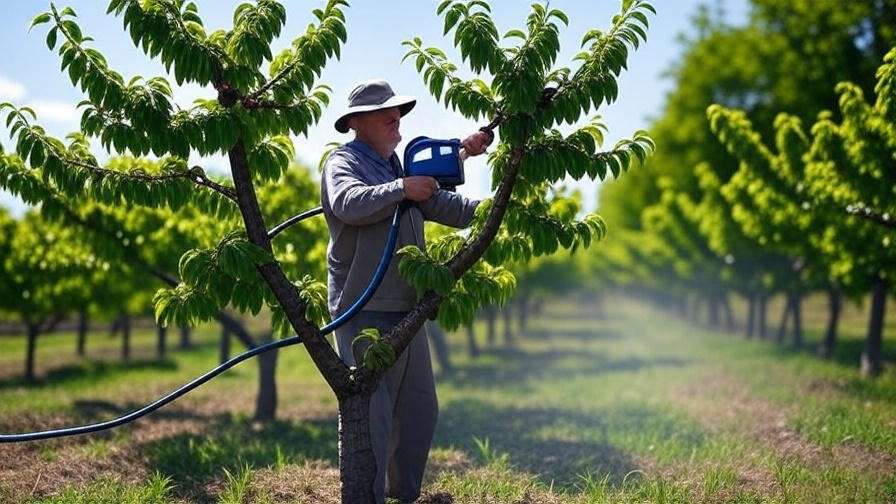
Spot-Treat Instead of Blanket Spraying
Instead of blanket spraying your entire orchard, target specific pest-infested areas. Spot-treating reduces chemical exposure and preserves tree health. Tip: Use a handheld sprayer for small orchards or individual trees to control application precisely. This approach also saves money and reduces environmental impact.
Strategy 4: Strengthen Cherry Tree Health Naturally 🌱
Boost Soil Health
Healthy soil creates resilient cherry trees. Incorporate organic compost, aged manure, or mulch to enhance nutrient uptake and improve root strength. A 2022 study from Cornell University found that cherry trees grown in enriched soil showed 30% less stress from pesticide exposure. Test your soil annually to monitor pH and nutrient levels, aiming for a pH of 6.0–6.5 for optimal cherry growth.
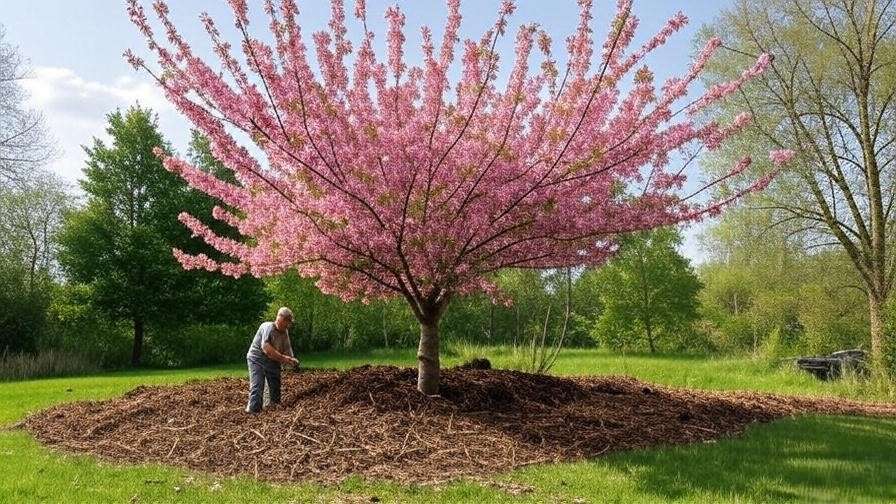
Prune and Maintain Trees
Regular pruning improves air circulation, reducing humidity and the need for fungicides. Remove dead or damaged branches to prevent pest entry points. Prune in late winter, before spring growth, to avoid stressing trees. Tip: Sterilize pruning tools between cuts to prevent disease spread. Healthy, well-maintained trees are better equipped to withstand minor pesticide exposure.
Strategy 5: Implement Integrated Pest Management (IPM) 🐞
What Is IPM?
Integrated Pest Management (IPM) is a sustainable approach combining biological, cultural, and chemical controls to minimize pesticide use. By focusing on prevention and natural solutions, IPM reduces the risk of pesticide damage. The EPA highlights IPM as a cornerstone of eco-friendly fruit tree care, making it a must for cherry growers.
Practical IPM Techniques
- Biological controls: Introduce beneficial insects like ladybugs or predatory mites to control pests naturally.
- Cultural practices: Rotate crops or plant companion plants like marigolds to deter pests.
- Monitoring: Use pheromone traps to track pest populations and apply pesticides only when necessary.
A Michigan cherry orchard reported a 40% reduction in pesticide use after adopting IPM, proving its effectiveness.
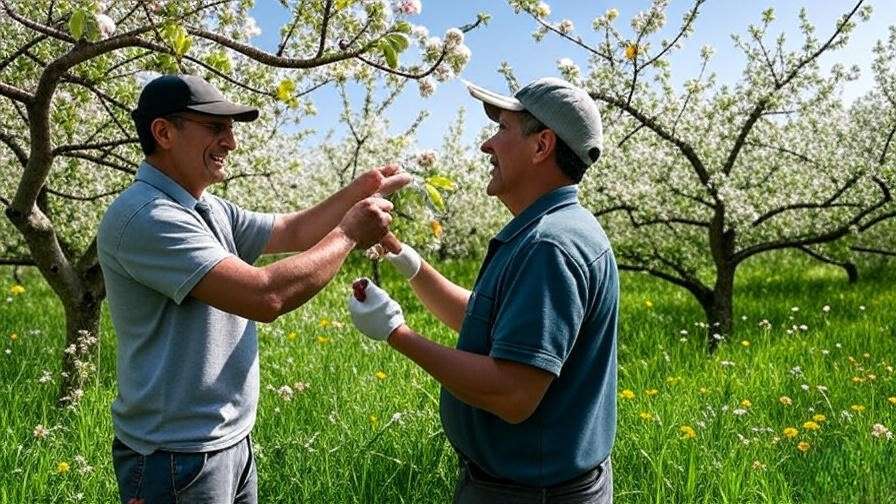
Strategy 6: Monitor and Test for Pesticide Residue 🧬
Regular Testing for Residue
Pesticide residue can accumulate in soil and fruit, posing risks to tree health and food safety. Regular testing ensures your cherries are safe for consumption and your soil remains healthy. Many local agricultural extension services offer affordable residue testing, or you can purchase home testing kits for convenience. Tip: Test annually, especially after heavy pesticide use, to monitor buildup and adjust your practices. A 2024 study from the University of Wisconsin found that orchards with regular residue testing had 25% fewer chemical-related issues.
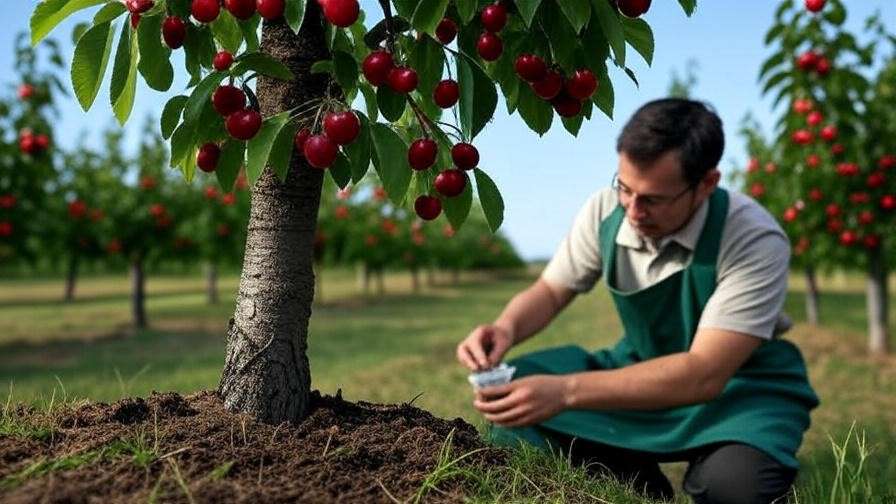
Mitigating Residue Impact
To reduce residue, wash cherries thoroughly before eating or selling. Rotate pesticide types to prevent chemical accumulation in soil, which can stress tree roots over time. For example, alternating between neem oil and insecticidal soap reduces the risk of persistent residue. Expert Quote: Dr. Mark Lee, an agronomist at Purdue University, emphasizes, “Regular residue testing is key to ensuring cherry trees remain safe for both growers and consumers.” If residue levels are high, consult an expert to remediate soil through organic amendments.
Strategy 7: Educate Yourself and Your Community 📚
Stay Informed on Pesticide Regulations
Pesticide regulations evolve, and staying updated is crucial for safe cherry tree care. Follow local and national guidelines, such as those from the EPA or your state’s department of agriculture. Some chemicals, like certain neonicotinoids, have been restricted due to environmental concerns. For instance, the EU’s 2023 pesticide restrictions prompted safer practices in cherry orchards across Europe. Tip: Subscribe to agricultural newsletters or join online forums to stay informed on regulatory changes.
Share Knowledge with Fellow Growers
Building a community of informed growers strengthens sustainable practices. Host workshops, join local gardening clubs, or share tips on social media platforms like X to spread awareness. Example: A Washington cherry grower started a blog documenting their success with IPM, inspiring others to reduce pesticide use. Tip: Create a quick guide or infographic on pesticide safety for cherry trees and share it with your network to amplify impact.
Common Mistakes to Avoid When Using Pesticides 🚫
Even with the best intentions, mistakes can harm your cherry trees. Here are pitfalls to avoid:
- Over-applying pesticides: Excess chemicals lead to phytotoxicity and environmental harm. Always follow dosage instructions.
- Ignoring label instructions: Skipping guidelines increases the risk of tree damage and ineffective pest control.
- Neglecting protective gear: Spraying without gloves, masks, or protective clothing poses health risks to you and your team.
- Applying during bloom: This harms pollinators and developing fruit, reducing yields.
Tip: Create a checklist before spraying to ensure you follow all safety protocols. A 2023 survey by the National Pesticide Information Center found that 60% of pesticide-related tree damage stemmed from user error, underscoring the need for diligence.
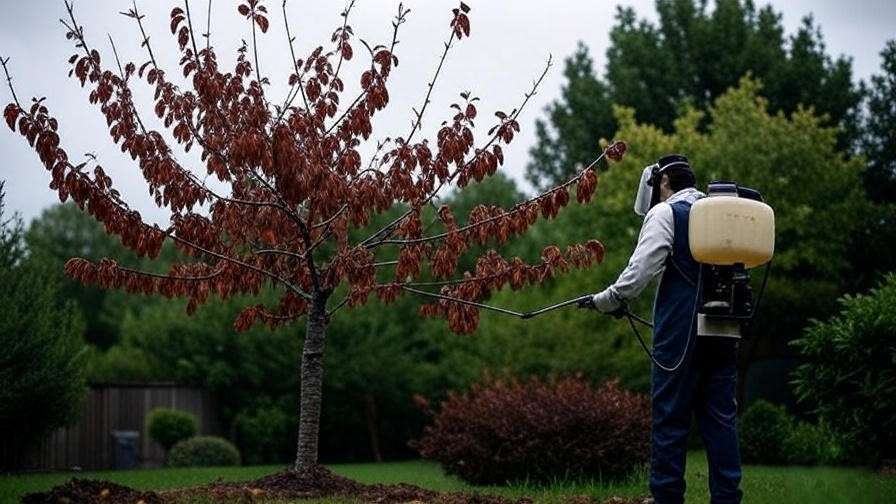
FAQs About Protecting Cherry Trees from Pesticide Damage ❓
Can organic pesticides still harm cherry trees?
Yes, even organic pesticides like sulfur or neem oil can cause damage if over-applied or used at the wrong time. Follow dosage guidelines and avoid spraying during bloom or high heat.
How often should I test for pesticide residue?
Test soil and fruit annually, or after heavy pesticide use, to ensure safety. Home testing kits or local extension services can provide accurate results.
What’s the safest time to apply pesticides?
Early spring (before bloom) or post-harvest are the safest times. Avoid spraying during bloom to protect pollinators and fruit development.
Can I reverse pesticide damage in cherry trees?
Minor damage can be mitigated with proper care, such as improving soil health and pruning affected areas. Severe damage may require professional intervention from an arborist.
Are there natural alternatives to pesticides for cherry trees?
Yes, IPM techniques like introducing beneficial insects or using companion planting can reduce pest pressure naturally, minimizing the need for chemicals.
Conclusion: Grow Healthier Cherry Trees with Confidence 🌟
Protecting cherry trees from pesticide damage is both an art and a science. By choosing safer pesticides, timing applications wisely, using proper techniques, boosting tree health, implementing IPM, monitoring residue, and staying educated, you can ensure your cherry trees thrive for years. These seven strategies not only safeguard your orchard but also support a healthier environment and tastier fruit. Start with one or two methods this season and share your results in the comments below—your success could inspire others! Let’s grow vibrant, sustainable cherry orchards together. 🌳













